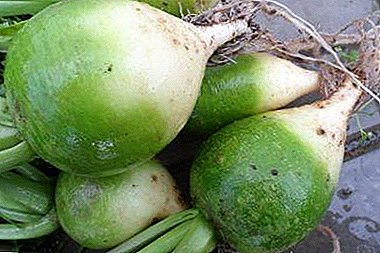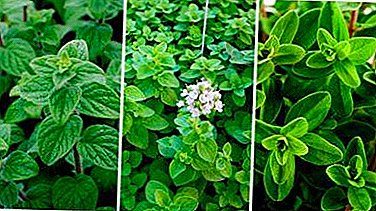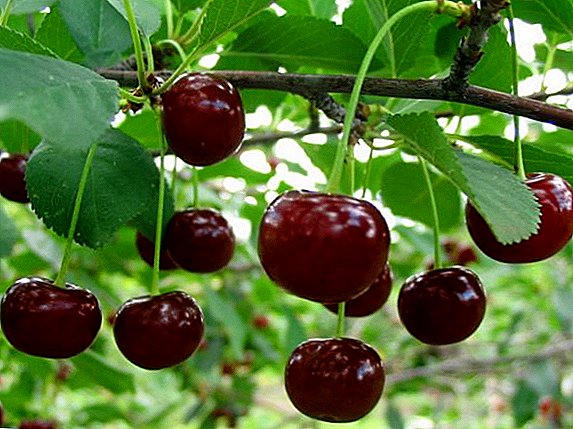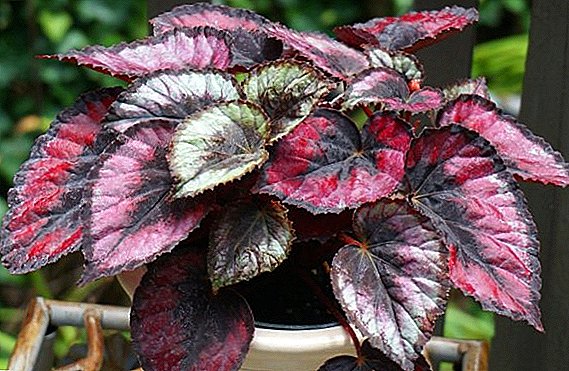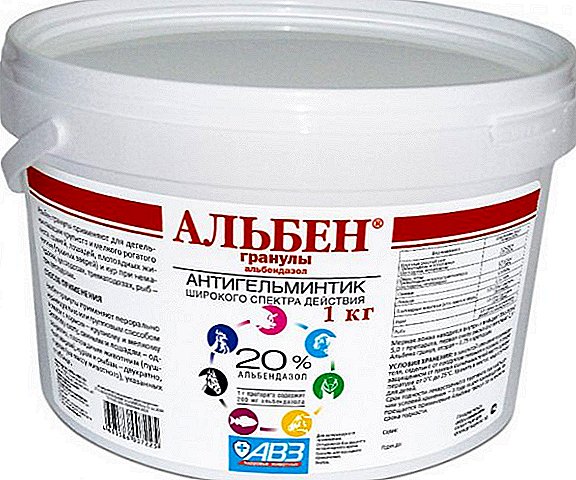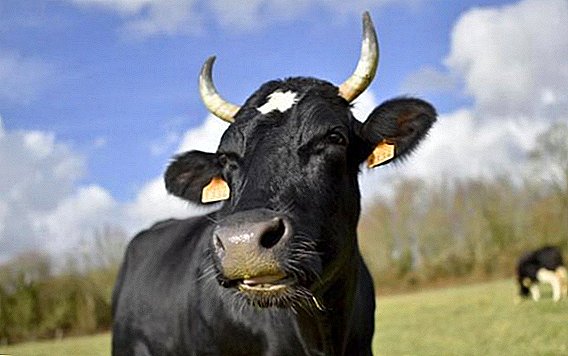 The skin is one of the largest organs of both man and animal. Diseases of this organ adversely affect the health of the whole organism, as damage to the skin often indicates the presence of malfunctions in the internal organs. In addition, skin diseases often go to the adjacent tissues and organs, so the presence of a skin ailment is a serious cause for concern and requires timely treatment.
The skin is one of the largest organs of both man and animal. Diseases of this organ adversely affect the health of the whole organism, as damage to the skin often indicates the presence of malfunctions in the internal organs. In addition, skin diseases often go to the adjacent tissues and organs, so the presence of a skin ailment is a serious cause for concern and requires timely treatment.
Skin diseases of cattle: symptoms and treatment
The defeat of the skin of cows is manifested not only in the presence of itching, ulcers, scars and other symptoms, but also in the deterioration of the general condition of the cow. An animal with a skin disease eats poorly, is anxious or, on the contrary, falls into apathy, which has a bad effect on the number of milk yields, fattening of the cow and financial profit of the farm as a result.
The symptomatology of skin lesions in cows is always clear and understandable, therefore, it is up to the owner how well he can start the treatment.
We advise you to learn more about diseases of cattle.
Eczema
This ailment is characterized by inflammatory processes in the upper layer of the skin (epidermis) and causes serious consequences (from a decrease in milk yield to aggressiveness and a developmental disorder in calves).  Causes of eczema:
Causes of eczema:
- poor sanitary conditions (damp bedding, mold and dampness in the stall);
- frostbite of the skin, nipples or udder (if there are drafts in the stall during the winter period);
- skin irritation or injury;
- unbalanced diet (lack of vitamins, plenty of sugar and carbohydrates);
- fungal or bacterial infections;
- the presence of bloodsuckers (tick, gadfly, lisper, etc.), as well as worms;
- diseases of the digestive tract;
- allergic reaction due to antibiotics.
Important! Another rare cause of eczema is congenital sensitization - increased skin sensitivity.Symptoms of eczema depend on the stage of the course of the disease, all they are distinguished 5:
- Erythematous (initial): general redness, swelling, itching - the cow begins to itch and be very anxious.
- Papular (nodular): small nodules appear, which do not disappear when pressed. Puffiness increases, there is a strong burning sensation and inflammatory processes.
- Vesicular and weeping (most acute form): nodules filled with purulent contents. The sores increase in size and burst when in contact with each other. On such affected areas, hair falls out, and scars may remain in the place of bursting abscesses.
- Scaly form: pus that has poured out gradually dries out, forming a firm crust.
- Scaly (final): gradual healing, subsidence of edema, falling away of scabs and crusts, the beginning of skin recovery.

Treatment depends on the stage of the disease - so, at the initial stage may be sufficient treatment with antiseptic agents, but in the acute form it is possible the recourse to antibiotics.
Therapy for advanced eczema looks like this:
- Treatment of damaged areas with furatsilinom, tar ointment, solution of boric alcohol, as well as the imposition of dressings with antiseptic ointment (for 10-15 minutes).
- Acceptance of non-hormonal drugs - "Tsidosept", camphor and tar ointment, zinc solution. These anti-inflammatory drugs are used with virtually no restrictions.
- Antibiotics - in the presence of acute bacterial infection. The use of antifungal ointment ("Zoomicol", "Mikosept" and other tetracycline ointments) is also additionally prescribed.
- Antihistamines - a solution of calcium chloride, "Suprastin", etc.
In particularly severe cases, autohemotherapy is used - an infusion of a cow under the skin of her own venous blood. It helps to stimulate protective functions, and promotes the regeneration of epidermal cells.
Prophylaxis Eczema is a timely examination of the veterinarian, compliance with sanitary standards, balanced feed and regular examination of the skin of cows. 
Lichen
The main reason for the occurrence of lichen is infection with trichophyton and microsporum - pathogenic pathogenic fungi that can live on infected skin areas of 5-8 years. The danger of depriving is that such a disease can easily move on to other animals, young calves and even humans. Licking pathogenic spores remain on the skin, wool, water troughs, feeders, so to get rid of the disease will require careful disinfection of the room and all its equipment.
Read more about how and what to treat versicolor in a cow at home.
Causes of deprivation:
- weakened immunity of the animal;
- lack of vitamins;
- skin sensitivity;
- contact with a sick animal or a person who is infected is deprived.

Symptoms of lichen depend on the specific stage of the disease:
- Erased - the easy form, strikes generally adult individuals. Broken and ruffled hairs appear on small areas of the skin, which can peel off. A slight itch is possible. For accurate determination of lichen at the erased stage, additional laboratory analysis is necessary, since the external signs of the disease are still poorly expressed.
- Surface - increased itching, lesions with disheveled hairs increase, some parts of the coat begin to become covered with inflamed crusts. Hair loss begins, on the spot of such bald spots it is possible to detect inflamed wounds.
Did you know? The taste of cow's milk depends on what kind of food she has eaten before. So, having consumed wormwood, the cow will give its milk a bitter taste, but if she eats blooming clover, the milk will become sweetish.
- Deep - mainly found in weakened animals with low immunity. The animal becomes irritable, refuses to eat, rapidly losing weight. A strong inflammation of the skin begins - large, dried crusts appear, which resemble dough. From wounds pus and mucus with an unpleasant smell can ooze, rapid hair loss begins (it can fall out in whole sections).
- Bubble - merging of individual spots into one large infected area. The appearance of deep ulcers with pus. The depletion of livestock, complete rejection of food and food, death is possible.

Treatment of lichen is always aimed at eliminating the causative agent of the disease:
- The placement of a sick animal in quarantine.
- The introduction of an antifungal drug (or vaccine) intramuscularly. Injections are carried out every 10-14 days (all injections can be up to 4-6, then a break is necessary).
- The use of antifungal ointments and keratolic balms. Such products containing active antifungal components, help get rid of the pathogen. Ointments are applied to the affected areas every 12 hours. In order for the cow not to lick the ointment, a gauze bandage is additionally applied on top, which is fastened with a bandage.
- Flooding an animal with vitamin means is necessary for raising immunity.
- Thorough disinfection of animal stalls, feeders and drinkers - any disinfectants that are safe for animals (iodine solution and salicylic alcohol, formalin, bleach, etc.) are suitable for this.
In addition, the sick animal needs to improve the quality of food, and ensure rest. As prescribed by the veterinarian, some antibiotics can be used to reduce the itchiness and pain in an animal.
Important! When treating the wounds of a sick animal, as well as when injecting, feeding, etc., always use sterile protective gloves (and you can only use them once and you must wear a new pair for each subsequent treatment of wounds).
Licking prevention is timely vaccination (TF-130 and TF-130K vaccines), regular vet examination, nutrition quality control, regular feeding with vitamin supplements, as well as periodic disinfection of the entire barn (at least 1 time in 3 months). 
Nodular dermatitis
Infectious disease, accompanied by fever, swelling of the skin and the appearance of characteristic tubercles on it, as well as damage to internal organs (in severe form of the disease). It is characterized by a decrease in milk yields, weight loss of livestock, and in some cases, the onset of sterility (a cow can no longer conceive and endure a calf).
The causes of nodular dermatitis are:
- virus infection of dermatitis through the blood - the source can be both an infected animal, and birds and blood-sucking insects;
- insemination of a cow with an infected bull;
- infection of a calf by a sick mother through milk;
- general weakness of immunity and lack of vitamins.
Symptoms of nodular dermatitis are similar to smallpox disease:
- appearance of small nodules on the skin;
- general inflammation of the skin, swelling;
- severe fever a day after infection;
- fever;
- education in the area of the groin, udder, head very dense tubercles, which sometimes merge into one large swollen lump;
- lacrimation and gray nasal discharge (sometimes with pus);
- loss of appetite, weakness;
- excessive salivation (with severe form), heavy breathing, severe swelling of the lymph nodes, sometimes asphyxia;
- appearance of erosion on the internal organs (mainly in the intestinal tract and lungs), as well as the cornea of the eye. Sometimes due to the occurrence of erosion occurs blindness.

Treatment of nodular dermatitis in a progressive and severe stage (when the disease lasts for more than 30 hours), unfortunately, is impossible: a sick animal and those that have come into contact with it, kill it and carry out thorough disinfection and disinsection measures.
Animals at risk (which were located within a radius of 10-15 km from the source of infection or were suspected of being infected) are placed in quarantine, where they are vaccinated and provided with intensively fortified feeding.
It will be helpful for you to learn more about the symptoms and treatment of nodular dermatitis in cattle.
Prevention of nodular dermatitis is an annual immunization - 3 strains of the special sheep pox virus are administered to the cow. Some vaccinated animals may develop local signs of disease (the appearance of tubercles), which disappear within 2 weeks. The vaccine validity period is 1 year.
Scabies (demodicosis)
This disease is caused by subcutaneous mites, which most often appear in young individuals in the hair follicles. With the disease of a cow, scabies is quickly transmitted to the whole herd, therefore, a sick animal must be quarantined.
Causes of scabies:
- non-observance of sanitary and hygienic norms in the barn (accumulation of waste, as well as a moist environment contributes to the cultivation of scabies mites);
- contact with sick animals;
- skin damage or excessive skin sensitivity.
 Symptoms of scabies are:
Symptoms of scabies are:- the appearance of moist erect formations with a diameter of up to 10 mm in the area of the udder, the head and neck of the animal, as well as on the extremities;
- severe itching (the animal is constantly itching);
- peeling of the skin. With the progression of the disease - the appearance of dense crusts;
- anxiety of the animal, loss of appetite.
Scabies treatment is aimed at getting rid of scabies mites:
- The diseased animal is quarantined.
- Insecticidal ointments, sprays and balms that are applied to the affected areas (preparations based on butomat, trichlorfon, phosphoric acid) are used. Processing is carried out every 10 days.
- With a strongly progressive disease - the imposition of antiseptic compresses on combed sores;
- Vitaminizing feeding.
We advise you to read about how and how to treat scabies in cows.
Scabies Prevention serves regular spraying of insecticides in the premises where cows are kept (at least once a month). A prerequisite for prevention or treatment is also adherence to sanitary standards (cleaning the barn from dirt, food residues, regular airing, etc.). 
Streptoderma
Skin disease caused by streptococci. Characterized by a change in skin color (the appearance of pinkish spots that can peel off), anxiety of the animal. The danger of the disease lies in the risk of transmission from a sick cow to a healthy animal and person.
Did you know? Cows can swallow small metal objects together with food, which can result in injury to internal organs and other problems, so some owners have thought up of slipping small magnets into the animals' food, which, after ingestion, get into the scar or the stomach mesh and collect metal.
Causes of streptoderma:
- any skin lesions (scratches, bites and scratches);
- low immunity, lack of vitamins;
- insect bites wearing streptococci;
- contact with diseased animals.
Symptoms of streptoderma are:
- the appearance of pinkish flaky spots on the skin, udder;
- itching and burning of the skin;
- the formation of dry crusts at the site of combed wounds;
- intense thirst, anxiety of the animal.
Treatment of streptoderma is based on the use of antiseptic and antibacterial drugs:
- The animal is quarantined.
- External treatment of wounds and scaly stains with furatsilinom, "Levomekol" or other antiseptics.
- Applying wet compresses (based on 2% resorcinol). The bandage is applied daily for 7-10 days.
- With a strong neglect of the disease - injections of antibiotics against streptococci.
Prevention of streptoderma It consists in the regular antiseptic treatment of the cowshed, the timely isolation of the diseased animal (to avoid contamination of healthy cows), as well as a balanced diet and examination of the veterinarian.
Hypodermatosis
Dangerous chronic disease, which is caused by gadflies and their larvae living under the skin. This disease affects not only the skin, but also almost all internal organs, which negatively affects not only the number of milk production and meat productivity, but also the health of the cow as a whole.
Learn more about cattle hypodermatosis.
Causes of hypodermatosis in cows are:
- bites with gadflies (always in the summer): females lay their eggs on the cow's skin (up to 20 pieces), of which after 3-6 days the small larvae of parasites hatch;
- contact with an already sick animal;
- strong combing and damage to the skin.

Symptoms of hypodermatosis:
- the appearance of small wounds from which serous exudate is released — this occurs when the hatched gadfly larvae penetrate the subcutaneous tissue;
- animal pain, itching and burning, scratching wounds;
- anxiety of the animal;
- decreased milk production, loss of appetite;
- decreased cow activity, apathy;
- swelling of the skin, the presence of inflammatory processes. Palpation may cause pus;
- appearance of dense tubercles (2-3 weeks after infection) in the region of the ridge, back, waist, chest and lower abdomen.
The treatment of hypodermatosis begins after an accurate diagnosis has been established (by the presence of tubercles in the spine and back):
- A sick cow and all the animals in the herd that have come into contact with it are placed in quarantine.
- Used "early chemotherapy" (in the summer) - is the use of insecticides of systemic properties that can eliminate the larvae of gadfly of the first stage: "Cydectin", "Aversect", "Hypodectin-H". Slaughter for meat after treatment with such preparations is allowed after at least 5 days. If slaughter is necessary before, then the meat of such a cow is not suitable for human consumption, but can be used to feed carnivores.
- Introduction of injections of "Dermacin" or any preparation based on ivermectin (the procedure is performed once, subcutaneously or intramuscularly).
- Conducting "late chemotherapy" (in the autumn) - repeated use of drugs in the same doses. Also, additional watering of the back is performed with a water emulsion with a solution of cypermethrin and "Butox" (250 ml per animal). It is important to carry out this procedure so that the cow cannot lick this emulsion.
- Enhancing the quality of nutrition of the cow, may receive additional antibiotics.

Prevention of hypoderma is the treatment of animals with insecticidal agents, the disinfection of manure, the treatment of cows with antivovodic drugs (before the onset of the flight season of gadflies), as well as a balanced diet and regular examination of the veterinarian.
Lice (pediculosis)
Disease of cows with pediculosis occurs as a result of louse damage - small whitish insects. Lice are dangerous because they are carriers of various viral and fungal diseases, so the disease can lead to very serious consequences.
Important! A cow suffering from pediculosis does not have to be quarantined; however, treatment should be carried out on each animal that has come in contact with the patient.Causes of pediculosis:
- poor sanitary conditions;
- contact with sick animals;
- drop in immunity, lack of vitamins in the body.

Signs of pediculosis:
- itching and trembling through the body of a cow;
- reduced skin elasticity;
- the breaking of hair, the appearance of dull and ruffled hairs;
- constant desire to scratch;
- loss of appetite, rejection of water;
- reduction in the number of milk yields;
- lag of young growth;
- in some cases anemia.
We recommend reading about how to remove lice from a cow.
Treatment of pediculosis is complex: moreover, if the lice hit one individual, then the whole herd is usually treated (since the probability of the disease of the remaining cows is almost 100%):
- Injections (ivermectin, "Avertin", "Baymek"). Special substances are introduced into the blood of a cow through an injection, which are destructive for lice biting the animal. It is held every 10 days until full recovery.
- Outside treatment: any ointments, solutions and drugs aimed at the destruction of ectoparasites ("Stomazan", "Vermek"). Usually carried out at least 3 treatments at intervals of 7-9 days.
- Treatment of the affected areas with a solution of 0.5% chlorophos. The tool has a good effect, but very transient: the active components kill the lice only during the day.
- Anti-parasitic barn treatment (You can use a special sulfuric smoke bomb).

In addition to medical drugs, used a good folk remedy against lice - wood ash. It is rubbed into the affected skin every 2 hours for two days. Re-processing is carried out after 5-7 days.
Prophylaxis pediculosis in a cow is timely inspection of the animal for the presence of lice, periodic use of repellents (treatment of frequent accumulations of lice - the spine, horns, head, tail and abdomen), compliance with sanitary standards, and regular processing of the barn with antimicrobial agents.
Prevention of skin diseases
The best treatment for any skin disease is timely prevention: the disease is easier to prevent than to cure it.
Did you know? In the old days, when plowing land on a plow, it was not the bulls that were harvested, but cows, because they are calmer and easier to control.Preventive measures to prevent skin diseases in cows include:
- quality control of food - the balance of food, as well as the introduction of vitamin supplements;
- observance of sanitary and hygienic norms in the barn: timely cleaning of manure and replacement of litter, elimination of dampness and drafts;
- periodic treatment of the barn with any antiseptic preparations (at least once every 2 months);
- vaccination plan compliance (against smallpox and nodular dermatitis);
- a thorough examination of each cow, monitoring the behavior and appetite of the animal;
- routine inspection of veterinarians.
 These preventive measures are not expensive or troublesome. The implementation of these recommendations will allow you to prevent or quickly identify skin diseases in cows and to start high-quality treatment in time.
These preventive measures are not expensive or troublesome. The implementation of these recommendations will allow you to prevent or quickly identify skin diseases in cows and to start high-quality treatment in time.

